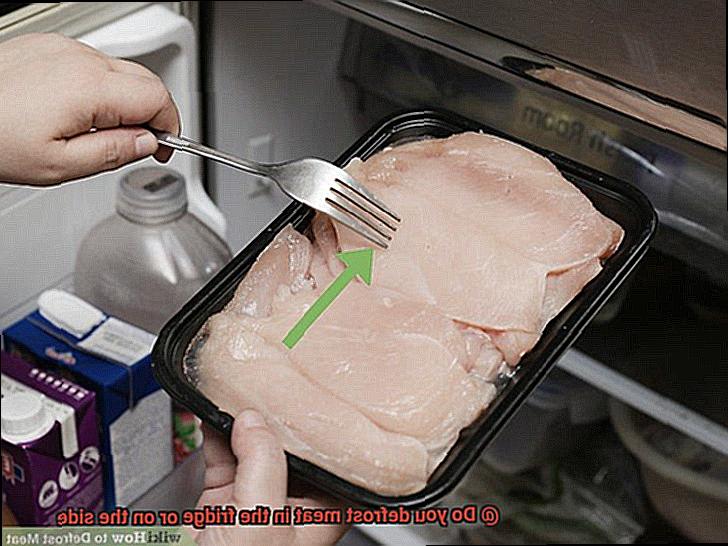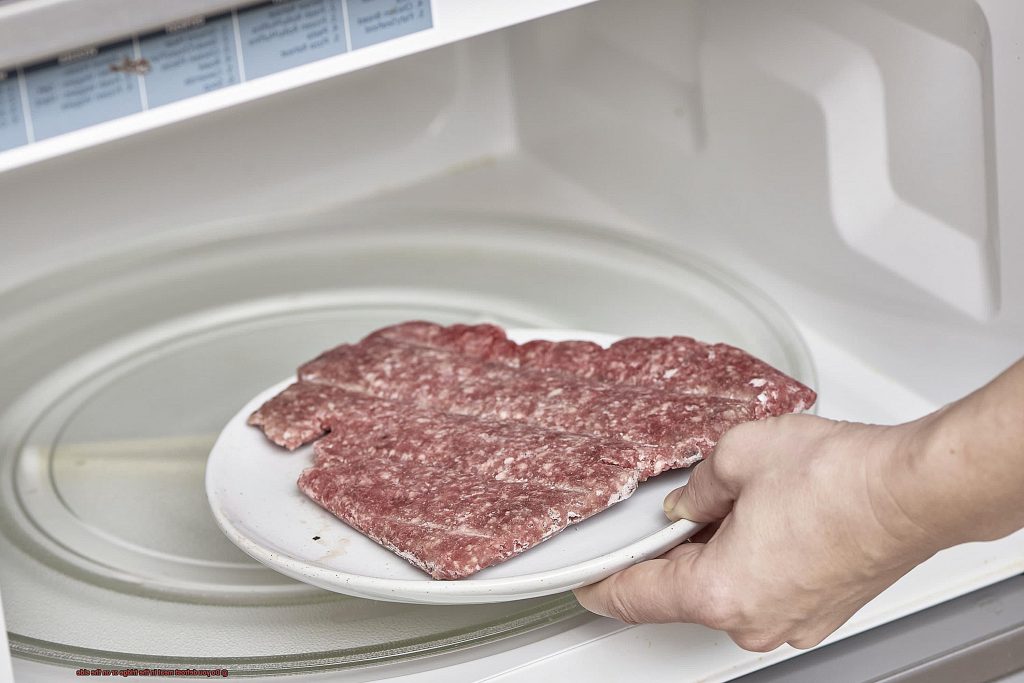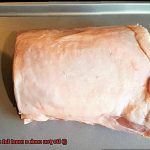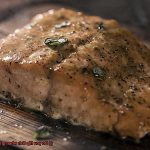Do you consider yourself a meat lover but are unsure about the best way to defrost your meat? Have you ever heard of the two popular methods, defrosting in the fridge and on the side, but can’t seem to decide which one is better? Well, don’t worry because you’re not alone.
Defrosting is a crucial step in preparing meat for cooking or grilling. Doing it incorrectly can result in food poisoning or spoil the texture and taste of your meat. The debate over whether to defrost meat in the fridge or on the side has been an ongoing discussion among food enthusiasts and professionals alike.
In this blog post, we’ll delve deep into both methods, discussing their advantages and disadvantages. We’ll also help you determine which method is best suited for your needs. We’ll cover how long it takes to defrost meat in the fridge versus leaving it out on the counter – which can cause bacteria growth. Additionally, we’ll explore how defrosting affects the taste and texture of your meat and provide tips on how to cook it once fully thawed.
So, buckle up, grab a cup of joe, and let’s discover whether to defrost your meat in the fridge or on the side.
Contents
What is Defrosting Meat?
The answer is simple: defrosting. Defrosting meat is the process of thawing frozen meat before cooking it, and it’s an essential step in preparing meat for cooking.
When meat is frozen, the water molecules inside it turn into ice crystals, making it hard and difficult to cook evenly. Defrosting the meat is necessary to ensure that it cooks thoroughly and retains its quality and texture. But how should you go about defrosting your meat?
There are two main methods of defrosting meat: in the fridge and on the side. Defrosting meat in the fridge involves placing the frozen meat in a container or on a plate and leaving it in the refrigerator overnight. This method is the safest as it prevents bacteria from multiplying and contaminating the meat. It also allows for a slow and even thawing process, which helps to maintain the meat’s quality and texture.
On the other hand, defrosting meat on the side involves leaving it at room temperature until it thaws. This method is faster than defrosting in the fridge, but it is also riskier as it allows bacteria to multiply rapidly at room temperature. This can increase the risk of foodborne illnesses if the meat is not cooked properly after thawing.
But wait, there’s more. It’s important to note that some meats may take longer to defrost than others. For instance, a pound of ground beef takes about 24 hours to defrost in the fridge, while a whole chicken can take up to two days. Therefore, it’s essential to plan ahead and allow enough time for your meat to defrost properly.

When defrosting meat, always prioritize safety by following proper food handling guidelines. This includes storing the meat in a container or on a plate to prevent any juices from dripping onto other foods and cleaning all surfaces that come into contact with raw meat thoroughly.
Advantages and Disadvantages of Defrosting Meat in the Fridge
Defrosting meat in the fridge is a popular and safe method, but there are both advantages and disadvantages to consider.
Advantages:
- Safety First: Defrosting meat in the fridge is a safe and effective way to thaw your meat without exposing it to harmful bacteria. By keeping the temperature below 40 degrees Fahrenheit, you can minimize the growth of bacteria and reduce the risk of foodborne illness.
- Planning Ahead: With this method, you can plan ahead by putting your meat in the fridge to thaw several days in advance. This can be especially helpful for busy people who need to plan their meals in advance.
Disadvantages:
- Time-Consuming: One of the biggest drawbacks of defrosting meat in the fridge is that it can take a long time for larger cuts of meat to thaw completely. Depending on the size of the cut, it can take anywhere from 24 hours to several days for the meat to fully thaw. So, if you’re in a hurry, this might not be the best option for you.
- Moisture Loss: Another potential disadvantage is that defrosting in the fridge can dry out the meat if it is not properly wrapped or covered. As the meat thaws, moisture will accumulate on its surface, which can cause it to become dry and tough if it is not sealed properly.
To ensure that your meat stays juicy and delicious every time, make sure to wrap it tightly in plastic wrap or store it in an airtight container before putting it in the fridge to thaw. This will help prevent moisture loss and keep your meat tender.
Advantages and Disadvantages of Defrosting Meat on the Side
As you’re preparing your next meal, you ponder the best way to defrost your meat. You’ve heard about defrosting meat on the side, but is it really a good idea? Let’s explore the advantages and disadvantages of this method.
Advantages:
- Quick process: Defrosting meat on the side is a speedy process that can take only a few hours. If you’re in a hurry and need to prepare dinner fast, defrosting on the side can be a lifesaver.
- No special equipment needed: Unlike other methods of defrosting, such as using a microwave or sous-vide machine, defrosting on the side requires no special equipment or preparation. All you need is a flat surface to place the meat on.
Disadvantages:
- Risk of bacteria growth: One of the biggest concerns with defrosting meat on the side is the risk of bacteria growth. When left out at room temperature, meat can become a breeding ground for harmful bacteria that can cause food poisoning. This risk is especially high in warmer temperatures or humid environments.
- Uneven thawing: Defrosting meat on the side can result in uneven thawing, with the edges of the meat beginning to cook while the center remains frozen. This can lead to an unevenly cooked meal and can be particularly problematic when grilling.
- Cross-contamination: Defrosting meat on the side can cause drips and leaks, which can lead to cross-contamination in your kitchen. The juices from the meat can spread to other surfaces and contaminate other foods, leading to potential health risks.
Factors to Consider When Choosing a Method for Defrosting Meat
As an expert in the field, let me guide you through the factors to consider when choosing a method for defrosting meat.
Firstly, let’s talk about time. Defrosting in the fridge takes longer, but it is the safest and most reliable method. It usually takes about 24 hours for every 5 pounds of meat. On the other hand, defrosting at room temperature is a faster option and can take as little as an hour or two. However, this method can be risky as it allows bacteria to grow on the outer layer of the meat if left out for too long.
The safety factor should also be taken into account. Defrosting in the fridge is considered the safest method as it maintains a consistent low temperature, preventing bacterial growth. In contrast, defrosting at room temperature can create a breeding ground for bacteria if not monitored closely.
Texture and taste are crucial factors when it comes to cooking meat. Defrosting in the fridge helps preserve the texture and flavor of the meat, while defrosting at room temperature can cause the meat to lose moisture and become tough. Therefore, if you want your meat to be tender and juicy, defrosting in the fridge is the way to go.
Lastly, convenience should also play a role in your decision-making process. Defrosting in the fridge requires advanced planning, while defrosting at room temperature can be done quickly but requires constant monitoring to avoid bacterial contamination.
Safety Tips for Handling Raw Meat
Handling raw meat can be a risky task, as it can contain harmful bacteria that can cause foodborne illnesses. Therefore, it is important to follow safety tips to keep yourself and your loved ones safe. Here are some tips to keep in mind when dealing with raw meat:
Wash Your Hands
Washing your hands is the most important step when handling raw meat. Always wash your hands before and after handling raw meat, with soap and warm water for at least 20 seconds. This will help prevent the spread of bacteria and keep your hands clean.
Use Separate Cutting Boards
Using separate cutting boards for raw meat and other foods is essential to prevent cross-contamination. Using the same cutting board for vegetables and raw meat can transfer harmful bacteria from the meat to other food items, leading to food poisoning. Make sure to clean and sanitize the cutting board thoroughly after each use.
Keep Meat Refrigerated
When you buy raw meat, make sure to keep it refrigerated until you are ready to cook it. This will help prevent the growth of bacteria that can cause food poisoning. If you’re planning to marinate the meat, keep it covered in a sealed container in the fridge.
Thaw Meat Safely
To avoid bacterial growth, it’s best to thaw meat in the refrigerator overnight instead of thawing it on the counter or using a microwave. Thawing at room temperature exposes the meat to harmful bacteria, which can lead to foodborne illness.
Cook Meat Thoroughly
Cooking raw meat thoroughly is essential to kill any harmful bacteria that may be present. Use a food thermometer to ensure that the internal temperature of the meat reaches at least 165°F for poultry and ground beef, and 145°F for steak and pork chops.
Store Meat Properly
Once you’ve cooked your meat, store leftovers in an airtight container and refrigerate them immediately. Leftover meat should be used within three to four days, or you can freeze it for later use.
How Long Does it Take to Defrost a Pound of Ground Beef in the Fridge?
As an expert in the art of defrosting ground beef in the fridge, I am here to share with you some tips and tricks to ensure that your meat is not only safe but also scrumptious.
First and foremost, it is crucial to note that defrosting ground beef in the fridge is the safest method. It prevents bacterial growth on the meat and maintains a consistent temperature throughout. As for the question on everyone’s mind – how long does it take? Well, this depends on the thickness of the meat. Generally, it can take anywhere from 12 to 24 hours for a pound of ground beef to fully defrost in the fridge.
To defrost your ground beef safely, place it on a plate or bowl to catch any juices that may seep out. It is essential to put it on the bottom shelf of your fridge to prevent cross-contamination with other foods. Never be tempted to thaw your meat at room temperature or in warm water, as this can result in bacterial growth and potential foodborne illnesses.
Whilst your meat is defrosting, keep track of its expiry date and ensure that it does not go beyond it. If you have defrosted your meat but are not planning to use it immediately, you can refreeze it after cooking.
It is vital to keep in mind that handling raw meat can be perilous if not done correctly. Thus, follow these six safety tips: wash your hands, use separate cutting boards, refrigerate meat, thaw meat safely, cook meat thoroughly, and store meat appropriately.
What Temperature Should You Thaw Meat At?
Before you fire up your grill, it’s essential to thaw your meat safely. Thawing meat might seem like a simple task, but it’s crucial to understand the proper temperature for thawing to avoid any risk of food poisoning.
To ensure the safest method for preventing bacterial growth, the USDA recommends thawing meat in the refrigerator. The temperature in the fridge should be kept at 40 degrees Fahrenheit or below to ensure your meat thaws at a safe temperature.
This method does require some planning ahead, as it can take several hours or even days for larger cuts of meat to fully thaw. But trust us, it’s worth it.
If you’re short on time, the cold-water method is another option for thawing your meat. This involves placing the sealed meat in a container of cold water and changing the water every 30 minutes until the meat is fully thawed.
The water must be kept at a temperature of 70 degrees Fahrenheit or below to prevent bacterial growth. This method is quicker than thawing in the refrigerator but still requires some time and attention.
It’s important to avoid thawing meat on the counter at room temperature as this can lead to unsafe bacterial growth. The outer layers of the meat can reach temperatures above 40 degrees Fahrenheit, which falls within the danger zone for bacterial growth. Trust us, you don’t want to risk getting sick from improperly thawed meat.
How Long Can You Keep Thawed Meat Before Cooking It?
Well, the answer lies in the type of meat and how it was thawed. In this article, we’ll explore the ins and outs of thawing meat and give you some critical tips to ensure your food stays fresh, healthy, and tasty.
If you’re thawing your meat in the fridge, you’re on the right track. Meat can last up to five days in the fridge before cooking, but make sure it’s been properly thawed in the refrigerator. This method is the safest way to thaw meat because it keeps it at a consistent temperature of 40 degrees Fahrenheit or below, preventing bacteria growth.
However, if you forget about your meat in the fridge for a while, it’s best to cook it as soon as possible to avoid compromising its taste and texture.
On the other hand, if you thawed your meat on the counter or in a sink of warm water, it’s essential to cook it immediately. Bacteria can grow rapidly at room temperature, leaving you open to food poisoning. So, plan ahead and only thaw what you need to cook.
It’s also important to note that once defrosted, frozen meat should be consumed within five days. This rule applies to all types of meat, including beef, chicken, pork, and fish.
To keep your meat fresh and safe to eat, freeze it in smaller portions so that you only need to thaw what you plan on cooking. This will speed up the thawing process and reduce the risk of bacteria growth.
Finally, trust your instincts when it comes to food safety. If you’re unsure whether the meat has gone bad or not fit for consumption, throw it out. It’s better to be safe than sorry when it comes to food poisoning.
4a2hQpj6Dxc” >
Conclusion
In conclusion, defrosting meat is a vital step in preparing it for cooking or grilling. However, doing it correctly is crucial to avoid food poisoning and maintain the texture and taste of your meat. The ongoing debate among food enthusiasts and professionals alike centers around whether to defrost meat in the fridge or on the side.
Defrosting in the fridge is widely considered the safest method as it prevents bacteria from multiplying and contaminating the meat. It also allows for a slow and even thawing process, which helps to preserve the meat’s quality and texture. In contrast, defrosting on the side is faster but riskier as it allows bacteria to multiply rapidly at room temperature.
When deciding how to defrost meat, several factors should be considered, including time, safety, texture, taste, and convenience. Additionally, following safety tips when handling raw meat is critical: washing your hands, using separate cutting boards, refrigerating meat properly, thawing safely, cooking thoroughly, and storing appropriately.
Finally, once defrosted, frozen meat should be consumed within five days. To keep your meat fresh and safe to eat longer-term; freeze it in smaller portions so that you only need to thaw what you plan on cooking. Trust your instincts when it comes to food safety; if you’re unsure whether the meat has gone bad or not fit for consumption – throw it out.
In summary: Defrosting may seem like a simple task but doing so correctly can make all the difference between an enjoyable meal or a health hazard.






